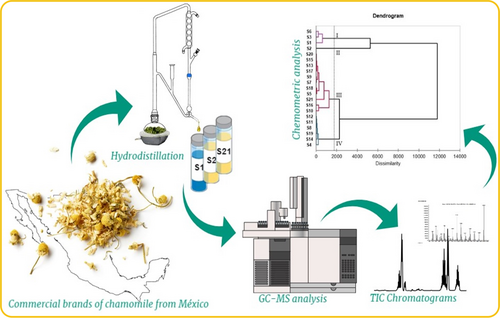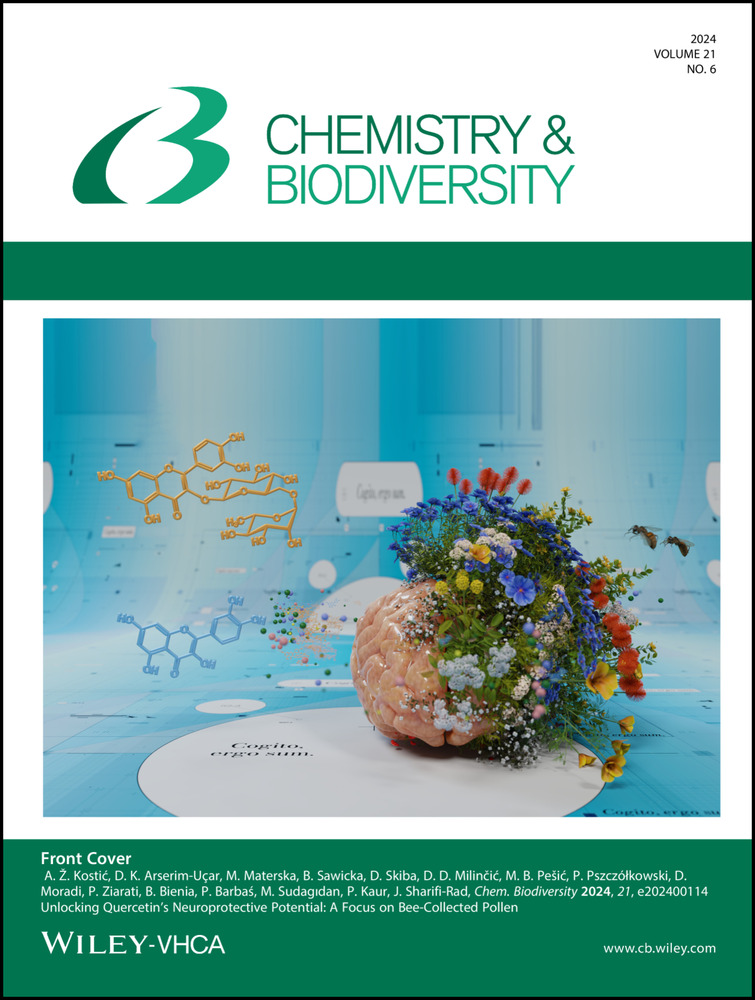GC-MS AND Chemometric Analysis of the Essential Oils Obtained from Mexican Commercial Chamomilla Recutita Teas
Abstract
The essential oils prepared by hydrodistillation of twenty-one brands of German chamomile (S1–S21) commercialized in Mexico were analyzed by GS-MS. Altogether, twenty-four different compounds were identified in the analyzed samples, varying from 77 to 100 % of the total composition. Multivariate analyses were applied to explore similarity/dissimilarity and correlation between all samples; the results revealed a strong correlation among samples S4, S5, and S7–S21 due to the presence of (Z)-en-yn-dicycloether [(Z)-tonghaosu], α-bisabolol, β-farnesene, β-eudesmol, and xanthoxylin. The samples S1–S3 and S6 were clustered separately. Samples S1, S3, and S6 were characterized by their higher content of bisabolol oxide A (38.78 %, 51.84 %, and 70.46 %, respectively) as most known chemotypes of German chamomile, but only S1 and S3 contained chamazulene. Finally, S2 differed from the others because of its high content of (E)-anethole (62.28 %), suggesting a case of adulteration or substitution of the crude drug employed for manufacturing the product.
Graphical Abstract
Conflict of interests
The authors declare no conflict of interest.
Open Research
Data Availability Statement
The data that support the findings of this study are available in the supplementary material of this article.





